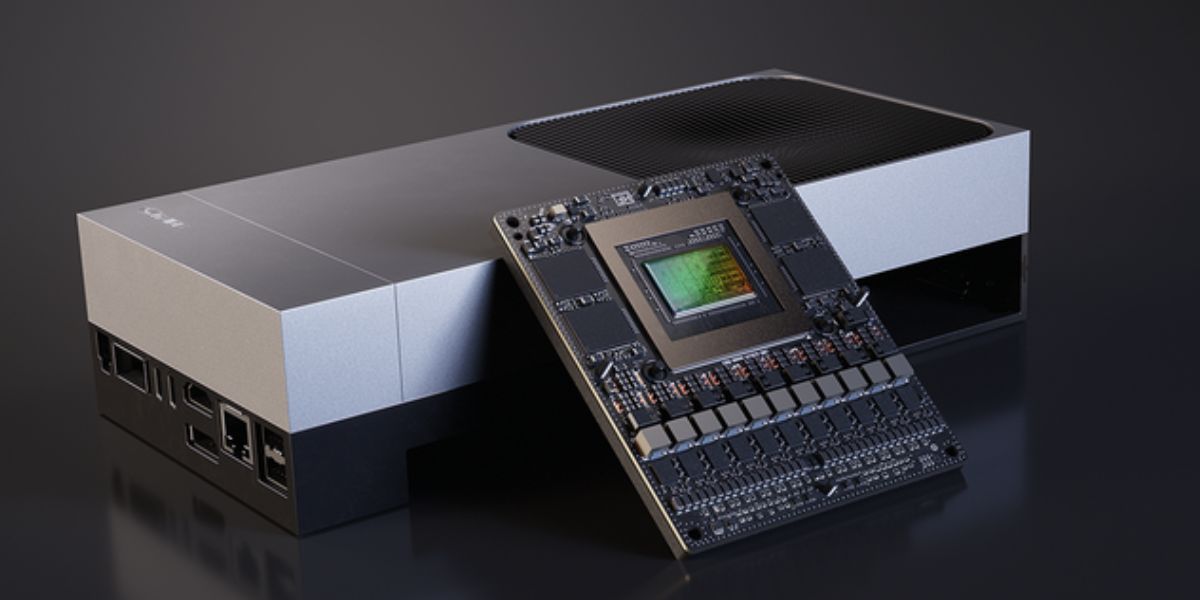
NVIDIA has unveiled Jetson Thor, a groundbreaking “robot brain” set to redefine the future of physical AI. Available as both the Jetson AGX Thor developer kit and the production-ready Jetson T5000 module, this compact supercomputer is purpose-built for humanoid, industrial, and autonomous robots.
7.5× More Power, With Better Efficiency In Jetson Thor
At the heart of Jetson Thor is a Blackwell GPU combined with a 14-core Arm Neoverse-V3AE CPU and 128 GB of LPDDR5X RAM. Together, they deliver up to 2,070 FP4 TFLOPS of AI compute. Which is an astonishing 7.5× leap from its predecessor, Jetson Orin. Even with this performance jump, it maintains impressive efficiency, running within a 40–130 watt power envelope and achieving nearly three times better energy savings.
Jetson Thor: Generative Reasoning at the Edge
What makes Thor a game-changer is its ability to run real-time generative reasoning on-device. It can process multimodal sensor data, make decisions on the fly, and handle multiple generative AI models simultaneously, all without relying on cloud connectivity.
NVIDIA’s software ecosystem further enhances this capability: Isaac for robotics, Metropolis for vision, Holoscan for sensor fusion, and built-in support for large-scale models like GR00T, Llama, and Qwen.
Adoption Across Robotics Giants
Major robotics players have already jumped on board. Agility Robotics is integrating Jetson Thor into its humanoid “Digit.” Meanwhile, Boston Dynamics is equipping Atlas with the same computing muscle. Companies like Amazon Robotics, Caterpillar, Meta, Medtronic, and Figure are also adopting the platform, while others such as John Deere and OpenAI are currently evaluating its potential.
By enabling robots to reason, adapt, and act in real time without external dependencies, NVIDIA has opened the door to next-gen humanoids. Not only that, Thor has also opened gateways for advanced surgical systems, precision manufacturing, and immersive AI-driven agents.
